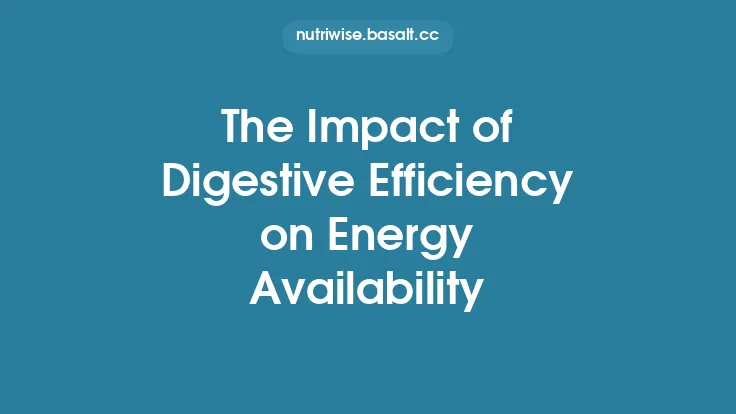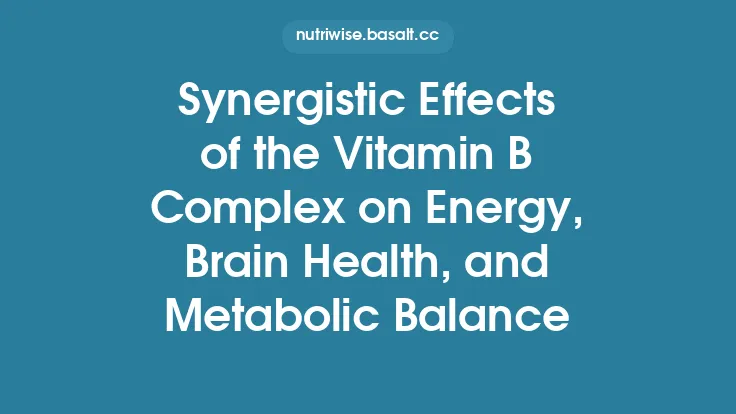Ghrelin, a 28‑amino‑acid peptide primarily produced by the stomach’s oxyntic mucosa, is the only known peripheral hormone that actively stimulates appetite. Discovered in 1999, it earned the nickname “the hunger hormone” because its circulating levels rise before meals and fall shortly after food intake, providing a key signal that initiates feeding behavior. Beyond prompting food consumption, ghrelin participates in a broader network of mechanisms that regulate energy balance, body weight, and metabolic health. Understanding how ghrelin operates—from its synthesis in enteroendocrine cells to its actions in the brain and peripheral tissues—offers insight into both normal physiology and the dysregulation seen in obesity, cachexia, and metabolic disorders.
Ghrelin Biosynthesis and Secretion
- Cellular Origin: The majority of circulating ghrelin originates from X/A‑like cells (also called P/D1 cells in humans) located in the fundus and body of the stomach. Smaller contributions arise from the duodenum, jejunum, pancreas, and even the hypothalamus.
- Pre‑proghrelin Processing: Ghrelin is initially translated as a 117‑residue pre‑proghrelin peptide. Signal peptide cleavage yields proghrelin, which is then packaged into secretory granules.
- Regulation of Release: Secretion is tightly linked to nutritional status. Fasting, caloric restriction, and hypoglycemia stimulate ghrelin release, whereas nutrient ingestion—particularly carbohydrates and proteins—suppresses it. Vagal afferents, circulating catecholamines, and gastric distension also modulate granule exocytosis.
- Circadian Rhythm: Ghrelin exhibits a diurnal pattern, with a nocturnal rise that peaks shortly before the typical breakfast hour, aligning its signal with anticipated feeding times.
Molecular Forms and Enzymatic Activation
- Acylated (Active) Ghrelin: For ghrelin to bind its receptor, the serine‑3 residue must be octanoylated—a unique post‑translational modification. This acylation is catalyzed by ghrelin O‑acyltransferase (GOAT), an integral membrane enzyme localized to the endoplasmic reticulum of ghrelin‑producing cells.
- Des‑acyl Ghrelin: The majority (≈80–90 %) of circulating ghrelin is the non‑acylated form, which does not activate the canonical ghrelin receptor (GHS‑R1a). Emerging evidence suggests des‑acyl ghrelin may exert distinct, sometimes antagonistic, effects via yet‑to‑be‑identified receptors.
- Stability and Clearance: Acylated ghrelin is rapidly de‑acylated in plasma by esterases, while both forms are cleared primarily by the kidneys and liver. The short half‑life (≈30 minutes) underscores the hormone’s role as a rapid, dynamic signal.
Ghrelin Receptors and Signal Transduction
- Growth Hormone Secretagogue Receptor 1a (GHS‑R1a): A G‑protein‑coupled receptor (GPCR) with high affinity for acylated ghrelin. It couples predominantly to Gα_q/11, leading to phospholipase C activation, intracellular calcium rise, and protein kinase C (PKC) signaling.
- Downstream Pathways: Activation of GHS‑R1a triggers several intracellular cascades:
- PI3K/Akt – influences neuronal survival and metabolic gene expression.
- AMP‑activated protein kinase (AMPK) – promotes orexigenic signaling in hypothalamic nuclei.
- MAPK/ERK – contributes to cell proliferation and neuroplasticity.
- Receptor Distribution: High densities of GHS‑R1a are found in the arcuate nucleus (ARC) of the hypothalamus, the ventral tegmental area (VTA), the hippocampus, and peripheral tissues such as the pancreas, heart, and adipose depots.
Central Nervous System Pathways Governing Meal Initiation
- Arcuate Nucleus Integration: Within the ARC, ghrelin directly stimulates neuropeptide Y (NPY)/agouti‑related peptide (AgRP) neurons, the most potent orexigenic population. Simultaneously, it inhibits pro‑opiomelanocortin (POMC) neurons, which normally promote satiety.
- Hypothalamic–Pituitary Axis: Ghrelin’s activation of NPY/AgRP neurons leads to downstream inhibition of melanocortin‑4 receptor (MC4R) signaling, reducing anorexigenic output and facilitating food intake.
- Reward Circuitry: Ghrelin reaches the VTA, enhancing dopaminergic firing and increasing the motivational drive to seek palatable foods. This effect links metabolic state with reward‑based feeding.
- Brainstem Contributions: The nucleus tractus solitarius (NTS) receives vagal afferent input modulated by ghrelin, integrating visceral signals with central appetite control.
Peripheral Actions Influencing Energy Balance
- Gastric Motility: Ghrelin accelerates gastric emptying and promotes antral contractility, preparing the gastrointestinal tract for incoming nutrients. This pro‑kinetic effect is mediated via vagal pathways and local smooth‑muscle receptors.
- Adipose Tissue: In white adipose tissue, ghrelin stimulates lipogenesis and inhibits lipolysis, favoring energy storage. In brown adipose tissue, it can suppress thermogenic activity, thereby reducing energy expenditure.
- Pancreatic Islets: Ghrelin exerts an inhibitory effect on insulin secretion from β‑cells, contributing to the rise in blood glucose observed during fasting. Conversely, it may promote glucagon release, supporting gluconeogenesis.
- Skeletal Muscle: Through AMPK activation, ghrelin can enhance glucose uptake independent of insulin, providing an alternative pathway for maintaining energy homeostasis during caloric deficit.
Interaction with Other Metabolic Signals
- Leptin Antagonism: Leptin, the adiposity signal, suppresses NPY/AgRP neurons, whereas ghrelin activates them. The balance between these hormones determines the net orexigenic drive. In leptin‑resistant states (e.g., obesity), ghrelin’s influence may become more pronounced.
- Insulin Feedback: Post‑prandial insulin rise contributes to the rapid decline in ghrelin levels, establishing a negative feedback loop that curtails further food intake.
- Nutrient‑Sensing Pathways: Amino‑acid and glucose sensors in the hypothalamus modulate ghrelin’s effect on feeding circuits, integrating macronutrient availability with hunger signaling.
Physiological and Pathophysiological Roles
- Fasting and Starvation: Elevated ghrelin during prolonged caloric restriction drives hyperphagia once food becomes available, a survival mechanism conserved across mammals.
- Obesity: Paradoxically, fasting ghrelin levels are often lower in obese individuals, possibly reflecting adaptive down‑regulation. However, ghrelin’s ability to stimulate reward pathways may still contribute to overeating, especially of high‑fat, high‑sugar foods.
- Cachexia and Anorexia: In conditions such as cancer cachexia, chronic illness, or anorexia nervosa, ghrelin levels are markedly increased, yet the expected increase in food intake is blunted, suggesting resistance at the receptor or downstream signaling level.
- Growth Hormone Axis: By binding GHS‑R1a on somatotrophs in the anterior pituitary, ghrelin stimulates growth hormone (GH) release, linking energy status with anabolic growth processes.
Clinical and Therapeutic Perspectives
- Ghrelin Agonists: Synthetic ghrelin mimetics (e.g., anamorelin) are under investigation for treating cachexia and sarcopenia, aiming to boost appetite and lean‑mass accretion.
- Ghrelin Antagonists / GOAT Inhibitors: Blocking ghrelin signaling is a potential strategy for obesity management. Small‑molecule GOAT inhibitors reduce acylated ghrelin production, attenuating hunger cues.
- Bariatric Surgery Effects: Procedures such as Roux‑en‑Y gastric bypass dramatically lower post‑prandial ghrelin, contributing to sustained weight loss. Understanding this alteration informs the design of less invasive interventions.
- Diagnostic Utility: Measuring fasting acylated ghrelin can aid in evaluating unexplained weight loss, functional gastrointestinal disorders, and certain endocrine abnormalities.
Research Tools and Measurement Techniques
- Immunoassays: Enzyme‑linked immunosorbent assays (ELISAs) and radioimmunoassays (RIAs) differentiate between acylated and total ghrelin using specific antibodies and sample stabilization (e.g., addition of protease inhibitors and acidification).
- Mass Spectrometry: High‑performance liquid chromatography coupled with tandem mass spectrometry (HPLC‑MS/MS) provides precise quantification and can detect novel ghrelin isoforms.
- Genetic Models: Ghrelin‑null mice, GOAT‑knockout strains, and GHS‑R1a‑deficient rodents elucidate the hormone’s physiological contributions and reveal compensatory mechanisms.
- In Vivo Imaging: Positron emission tomography (PET) ligands targeting GHS‑R1a enable visualization of receptor occupancy in the human brain, facilitating translational studies of appetite regulation.
Future Directions in Ghrelin Research
- Isoform Functionality: Deciphering the biological roles of des‑acyl ghrelin and other post‑translational variants may uncover new therapeutic targets.
- Microbiome Interactions: Emerging data suggest gut microbiota composition influences ghrelin secretion, possibly via short‑chain fatty acid signaling or bile‑acid mediated pathways.
- Chronobiology: Investigating how circadian clocks modulate GOAT activity and ghrelin rhythms could lead to time‑based interventions for metabolic disease.
- Personalized Medicine: Genetic polymorphisms in the ghrelin gene (GHRL) and its receptor may predict individual susceptibility to obesity or response to ghrelin‑targeted drugs, paving the way for genotype‑guided therapies.
Summary
Ghrelin stands at the crossroads of peripheral nutrient sensing and central appetite control. Its unique ability to rise before meals, act on hypothalamic orexigenic neurons, and modulate reward pathways makes it a pivotal driver of meal initiation. Simultaneously, ghrelin influences gastric motility, adipose storage, pancreatic hormone release, and growth hormone secretion, weaving a complex network that maintains energy balance. Dysregulation of ghrelin signaling contributes to both excessive weight gain and pathological weight loss, underscoring its clinical relevance. Continued exploration of ghrelin’s molecular forms, receptor dynamics, and interactions with other metabolic cues promises to refine therapeutic strategies for a spectrum of metabolic disorders, from obesity to cachexia.





